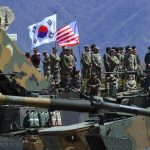The Kremlin announced that its air defense systems intercepted over 100 Ukrainian drones during a significant assault by Kyiv targeting military facilities in western Russia. This marked one of Ukraine’s largest offensives since the conflict began more than two and a half years ago.
According to Moscow’s Ministry of Defense, all 110 drones launched by Ukraine were destroyed, with interceptions occurring across several regions, including Kursk, Lipetsk, and Nizhny Novgorod.
Key targets of the Ukrainian strikes included the state-owned Sverdlov Plant in Dzerzhinsk, which produces ammunition and explosives for the Russian military. Local officials reported minor injuries among fire department workers, but assessments of the overall damage varied.
While Russian authorities claimed to have thwarted the attacks, Ukrainian forces celebrated what they viewed as successful operations against important military assets.

The Ukrainian military reported that their strikes caused “numerous explosions” at the Dzerzhinsk plant and the Lipetsk military airfield, indicating successful hits on critical infrastructure. The attacks targeted vital resources, including ammunition depots and fuel storage facilities.
Local governors from the affected regions reported minimal casualties and damage but acknowledged the events and the resultant fires caused by the drone strikes.
In retaliation, Russia launched missile and drone attacks on Ukraine, injuring at least 17 people in Kryvyi Rih. This exchange of aerial assaults has become a hallmark of the ongoing conflict, with Russia reportedly sourcing drones from Iran and North Korea amid increasing international sanctions and isolation.
Ukrainian President Volodymyr Zelensky noted that Russia has used a considerable number of Iranian-manufactured drones against Ukraine this year.
Zelensky called attention to the need for Ukraine to bolster its defenses against drone attacks, asserting that while the country has been effective in downing many incoming threats, it requires enhanced capabilities to dismantle the production and logistics networks supporting these drones.
He voiced concern that Russian aggressors could exploit delays in decisive action from the international community, underscoring the urgency of addressing these threats.


